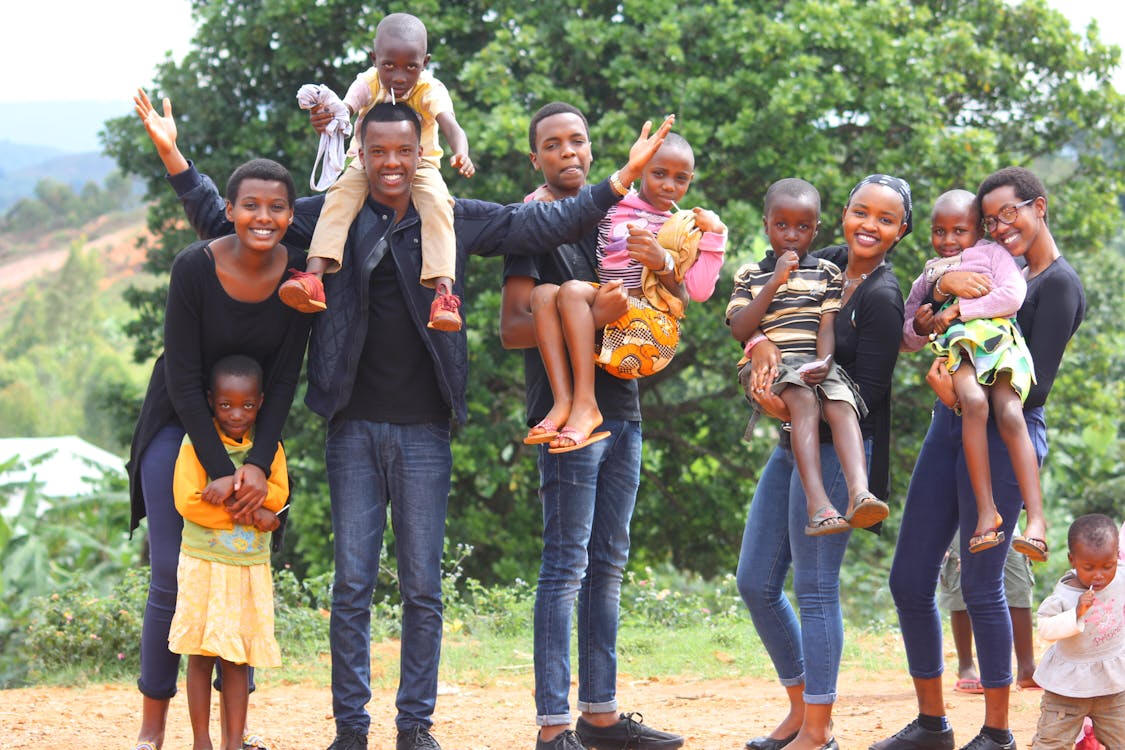The Weakening of The Bahamian Family Unit
By Barrington H. Brennen, Sept 17, 2025
PDF Format
 Is
it really true that the traditional family unit
is fading away? Sadly, but it’s true. In
fairness let me give some definitions and
clarifications to understand better. It is good
to understand that forty years ago and more, the
traditional family consisted of married parents
with children. In countries like the Bahamas
the family unity may have between four and ten
children.
Is
it really true that the traditional family unit
is fading away? Sadly, but it’s true. In
fairness let me give some definitions and
clarifications to understand better. It is good
to understand that forty years ago and more, the
traditional family consisted of married parents
with children. In countries like the Bahamas
the family unity may have between four and ten
children.
Today, the number of family units with a
married mom and dad have decreased. Also, the
number of children per family unity have also
decreased to one or two per unit. That’s not
really bad. But follow along. Interestingly,
the 2000 census for The Bahamas revealed these
statistics: There were 87,742 Households in the
Bahamas. There were 37,321 Bahamian homes where
married parents live together. That is 42.5% of
homes. There were 50,140 Bahamian homes where
no married parents live together. That was
57.5% of homes. Since 2000 these statistics
show that single parent homes in our country
outnumbered homes where there were married
parents. I am sharing these statistics to
remove the false notion that the traditional
family unit was the strongest and most prevalent
more than 40 years ago. Sadly, it wasn’t.
Here is another interesting fact the 2000 Census
revealed. The more children in a home the
lower the risk of divorce. The 2000 Census
revealed that when there were one and three
children, the number of divorces were the
highest. When there were 4 to 10 children, the
number of divorces were the lowest. Keep in
mind that couples are having less children in
2025. Hence, the increase in divorce.
The Bahamas National Statistical Institute
indicates that number of legally married people
dropped by 2.5 percent in 2022 compared to
2010. Keep in mind that homes with legally
married people only made up 42% of homes just
two decades ago. Also when you take a closer
look at the family structure fifty years ago it
constituted a married mom and dad with
children. Although promiscuity excited, many
believed that the traditional family unit was
stronger then compared to today’s world.
Let’s allow history to speak to us. In the book
“Statistical Abstract 1968 to 1988 Special 20th
Anniversary Edition for the Commonwealth of The
Bahamas” it states the following: “During the
period under review (1968 to 1987), there has
been a steady decline in the marriage rate from
8.9 per thousand mean population in 1969 to 7.9
in 1987. . . The decrease in the rate of
marriages has been accompanied by an increase in
the rate of divorce. The earliest divorce
statistics refer to 1975. In 1983 when the
Divorce Act was amended to widen the grounds for
divorce, the number of divorces more than
doubled.”

In spite of the historical facts about marriage
and the family, many of us still believe that
the family unit was more intact fifty years ago
and simpler—mom, dad, and children. Today, the
family is so convoluted it seem better to
describe it as a cluster of living mates or
household partners with dependents. Here is
one type of this cluster of living mates: An
unmarried man and women who both have children
for several other partners (from one to five
children or more) they have never been married
to. One or both of them might be divorced and
have one or more children with the divorced
partners. It is not unusual for this cluster of
living mates to have between four to twelve
children between themselves. Financially, it is
extremely difficult to support all the
children. Hense the extended family involving
grandmother, grandfather, aunts or uncles,
cousins, and sometime friends, who create more
confusion about lifestyle rules which lead to
the clusters becoming highly dysfunctional.
Hense, a weaker family unit.
Another type of family unit on the rise is the
single mother who has two to six children for
different men who are not supporting the
children financially. She struggles to make
ends meet with lower paying jobs. Unable to pay
rent, she is forced to live with a relative or a
man who claims that he will support her. But it
is not to long before he dumps her.
Let us look closer at the number of marriages
each year in our country. These figures as
based on my analysis from Bahamas National
Statistical Institute and can be found on my
website
www.soencouragement.org
You can draw your own conclusion. In 2000 there
were 2,366 Bahamian marriage and 3,752 tourism
marriages. This is a total of 6,118 during that
year. In 2010 there were 1939 Bahamian
marriages and 1989 tourism marriages. The total
number marriages in 2010 was 3,928. The lowest
number of marriages in one year was in 2020 with
1,301 marriages. This includes local and
tourism marriages. Perhaps the decrease was due
to the pandemic. In 2023 there was a total of
2,332 marriage in The Bahamas.
Note that around the world the number of
marriages is decreasing and the number of
children per family unit is decreasing.
Wikipedia give the following for the changes.
“1) A broader societal move towards modernity
and technological advancements has changed
perceptions and functions of the family. 2)
Increased opportunities and autonomy for women
have influenced marriage and family dynamics.
3) People are having children later in life, and
family sizes are shrinking globally. 4) The
Industrial Revolution and market economy shifted
families from self-sufficient units to being
more dependent on the market, making them more
vulnerable to economic pressures.”
Although these are true, it is my view that we
need to find ways to teach and promote the
advantages of having simple structural family
unites with little or no dysfunction. I have no
concern about the size of the family or whether
or not adults get married. I am more concerned
about people becoming self-actualized, healthy,
productive and wise decision-making
individuals.
Barrington H. Brennen is a marriage and family
therapist. Send your questions or comments to
question@soencouragement.org
or call 1242 327 1980 or visit
www.soencouragement.org.